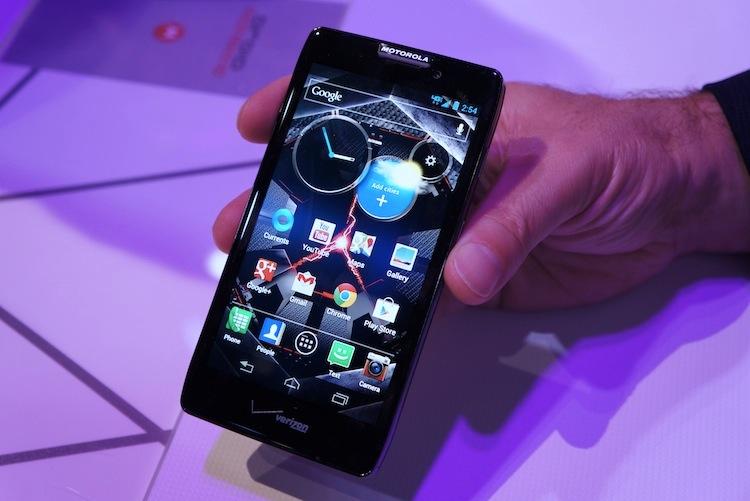
Battery life has always been a fairly major concern for us power users, particularly with the current and last-generation smartphones. The days of BlackBerry were great, at least in terms of battery life. But not long after that, battery woes abounded. Many of today's devices struggle to last an entire day off the charger, and that's a larger problem than many manufacturers seem to think.
What good is a wireless device if it constantly needs to be plugged into an outlet for some spare juice? At that point, how mobile is it really?
Manufacturers need to stop putting battery life on the back burner in favor of battery-munching features, such as LTE and larger, higher-resolution displays. While options may be quite slim, there is still at least one thing that can be done to prolong the time between charges: cramming more milliampere-hours in the casing of the device. And it's not as bad of an option as it may sound.
Motorola was the first to my knowledge to offer this sort of option out of the box. But it's not an entirely new concept. People have been fitting their mobile devices with bulky and unsightly extended batteries for as long as I can remember. Fortunately, Motorola found a better way by reducing as much space internally as possible and cramming every nook and cranny with more juice.
Originally, this was first done with the DROID RAZR and DROID RAZR MAXX. The original DROID RAZR was launched in November with a 4.3-inch qHD Super AMOLED Advanced display, 16GB built-in storage, a 16GB micro SD card, 1GB RAM, an 8-megapixel camera, 1.2GHz dual-core TI OMAP chipset and a 1,780mAh battery. The DROID RAZR MAXX launched just two months later in January with all the same specs, save for 8GB of built-in storage and nearly double the battery capacity, 3,300mAh.
The only difference externally was thickness. At the time, the DROID RAZR was the world's thinnest phone at 7.1mm thick with a camera hump. The DROID RAZR MAXX was just 9mm, which still isn't extremely chunky. But instead of having a camera hump the backside of the device was flush – no camera hump.
Last month, Motorola announced an addition to the refreshed RAZR brand, the DROID RAZR HD and DROID RAZR MAXX HD. The story this time around is mostly the same, but it makes a little more sense. The DROID RAZR HD comes with: 4.7-inch 720p Super AMOLED display, 16GB of built-in storage, 1GB RAM, 8-megapixel camera, 1.5GHz dual-core Snapdragon S4 chip and a substantial 2,530mAh battery. The DROID RAZR MAXX HD comes with mostly the same specifications, only it has double the built-in storage and the same 3,300mAh battery.

Externally, the two resemble much more than the previous RAZRs. The DROID RAZR HD is 8.4mm thick and the DROID RAZR MAXX HD is 9.3mm thick. To the naked eye, it's not easy to differentiate to two, which my colleagues Anthony Domanico of IntoMobile and Dan Seifert of The Verge affirmed on Twitter this morning.
This is a tactic I wish more manufacturers would be willing to offer. HTC claims customers would prefer a thinner device over a thicker one with a larger battery. But time and time again we see that theory prove wrong. Not to mention, we've seen that companies can make phones with considerably larger batteries without making them noticeably thicker.
Last week, we saw the HTC J Butterfly, a 5-inch 1080p device with a 2,020mAh battery and 16GB of built-in storage, become official in Japan. While the same (or a very similar device) is rumored to make its way stateside with a 2,500mAh battery as the HTC DLX, I'm still not impressed. A phone that big with such a high caliber display needs as much battery life and built-in storage as possible – more than 3,000mAh and at least 32GB of storage. A DLX MAXX of sorts.
Of course, manufacturers can't rip Motorola's MAXX branding. But they can build Pro and Plus (or +) versions of their flagship devices, right?
With the exception of the Galaxy Note II and DROID RAZR MAXX HD, every phone currently on the market could stand a larger battery and more storage. Almost every phone would be much better with the option of a significantly larger battery and more built-in storage, especially considering more manufacturers are going with non-removable batteries and no micro SD card slots.
If I could have purchased an HTC One X with 32GB and built-in storage and a 3,000mAh (or larger) battery, I'm not sure I would even switch to the Galaxy Note II once it's available in the States. And if the rumored HTC DLX came with the option of more storage space and an even larger battery, I might consider buying one. (Let's be honest, 2,500mAh seems meager in contrast to the rest of the specifications.
What say you, folks? Do you think OEMs should make MAXX-like variants of all their hottest handsets? Should every phone come with the option of double the storage space and a much larger built-in battery? Share your sentiments below!